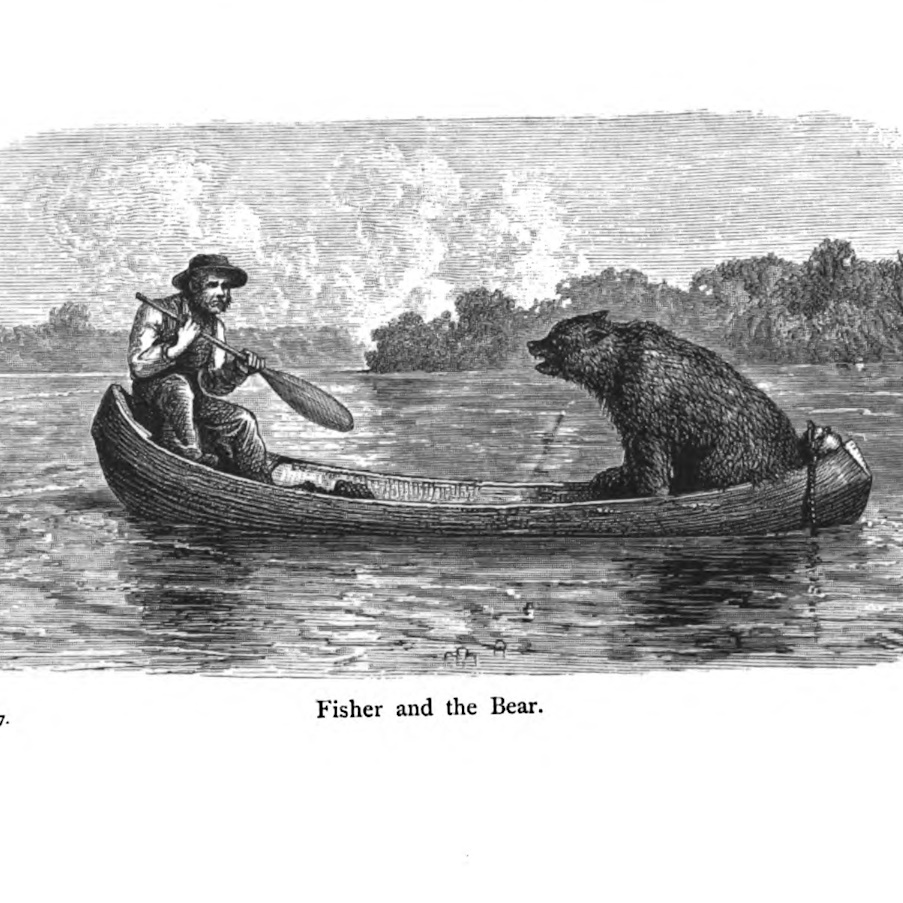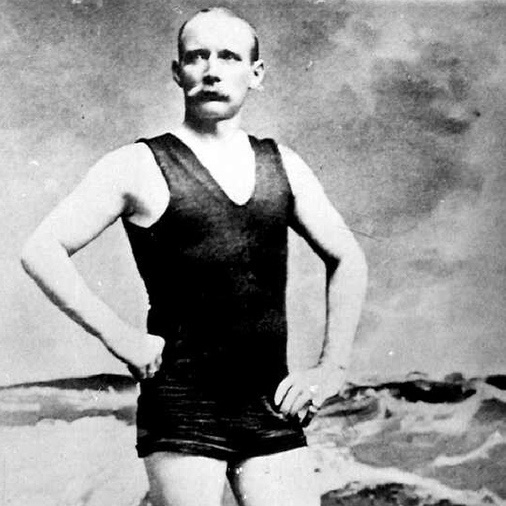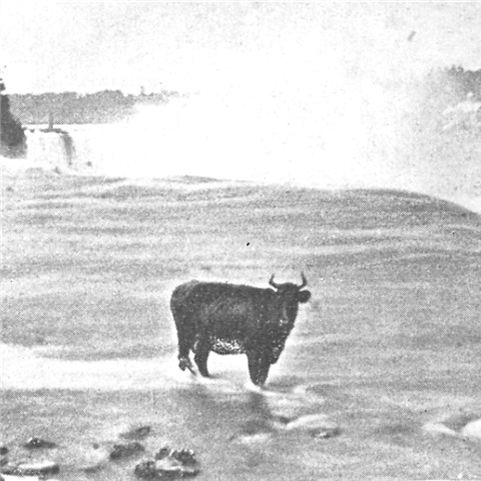Episode Transcript
[00:00:00] Speaker A: Welcome to the Niagara Falls History and Poetry Podcast, where I will discuss the history of Niagara Falls, an area through the lens of the poetry that has been written about the falls. I am Andrew Porteous, a retired local history librarian who worked at the Niagara Falls Ontario Public library for almost 30 years.
I have been the curator of the Niagara Falls Poetry Project since its inception in 1999. The website is NiagaraPoetry CA or just use your favorite search engine and search for Niagara Falls poetry. My philosophy on the history of Niagara Falls is that if I can't find a poem about it, it didn't happen.
I have been known, though, to write the odd limerick about various events so that they did in fact happen.
This podcast is available in audio format wherever you get your podcast from, as well as on YouTube with augmented video features. Also in this episode, Death and the Photographer, I'm going to discuss the tragedy that befell Joseph Avery in 1853, along with Platt Babbitt, the photographer or daguerreotypographer who forever captured the image of Joseph Avery clinging to a tree stump in the middle of the rapids just above the American Falls in a vain attempt to save his life.
The bare facts of this tragic episode, as related by TW Kreiner in his books Journeys to the Brink of Doom, are that on the evening of July 18, 1853, three drunken sand scow workers set out for a trip on the upper Niagara river in a small boat.
They ended up in the American rapids and the boat was swamped. Two of the men were immediately swept to their deaths over the falls, but the third, Joseph Avery, held on until he was swept over the falls the next day, around 6pm on July 19, 1853.
Attempts to rescue Avery are accurately described in the poem Avery 1853, written by William Dean Howells.
Howells was born in 1837 in Ohio into a household that greatly valued literary activities.
By the age of 22, he had become the news editor of the State Journal of Columbus, Ohio, and contributed poems and poroughs works to the Atlantic Monthly and other publications.
From 1861 to 1865, he became the United States Consul to Venice.
He later became a successful novelist and article writer and became the president of the American Academy of Arts and Letters. He died in 1920.
His poem Avery 1853 reads, all night long they heard in the houses beside the shore heard or seemed to hear through the multitudinous roar out of the howl of the rapids, as twere a lost soul's cries heard and and could not believe, and the Morning mocked, their eyes showing where wildest and fiercest the waters leaped and ran raving round him and past the visage of a man clinging or seeming to cling to the trunk of a tree that caught fast in the rocks below. Scarce out of the surges wrought Was it a life could it be to yon's slender hope that clung shrill above all tumult the answering terror rung under the weltering rapids. A boat from the bridge is drowned. Over the rocks the line of another are tangled and wound, and the long fateful hours of the morning have wasted soon as it had been in some blessed trance. And now it is noon.
Hurry now with the raft. But, O, build it strong and staunch and to the lines and treacherous rocks. Look well as you launch over the foamy tops of the waves and their foam sprent sides, over hidden reefs and through the embattled tides.
Onward rushes the raft, with many a lurch and leap lowered. If it strike him loose from the hold, he scarce can keep.
No, through all peril unharmed it reaches him. Harmless at last, and to its proven strength he lashes his weakness. Fast now for the shore. But steady, steady, my men. And slow.
Taut now the quivering lines now slack, and so let her go.
Thronging the shores around stand the pitying multitude, Wan as his own are their looks and a nightmare seems to brood heavy among them.
And heavy the silence hangs on all Save for the rapid's plunge and the thunder of the fall.
But on a sudden thrills from the people still impale coursing his unheard despair a desperate wail caught on a lurking point of rock it sways and swings sport the pitiless waters the raft to which he clings all the long afternoon it idly swings and sways, and on the shore the crowd lifts up its hands and prays.
Lifts to heaven and wrings a hand so helpless to save.
Prays for the mercy of God on him whom the rock and the wave battle for feathered betwixt them and who amid their strife struggles to help his helpers and fight so hard for his life, Tugging at rope and at reef While men weep and women swoon Priceless second by second so wastes the afternoon.
And it is sunset now, and another boat and the last down to him from the bridge through the rapids has safely passed, While through the crowd comes flying a man that nothing can stay Maddening against the gate that is locked athwart his way.
No, we keep the bridge for him. That can help him? You tell us, who are you?
His brother?
God help you both pass through wild with wide arms of imploring he calls aloud to him unto the face of his brother, scarce seen in the distance dim, but in the roar the rapids his fluttering words are lost, and in a wind of autumn the leaves of autumn are tossed, and from the bridge he sees his brother sever the rope holding him to the raft, and rise secure in his hope.
Sees all as in a dream, the terrible pageantry, populous shores, the woods, the sky, the birds flying free, Sees then the form that, spent with effort and fasting and fear, flings itself feebly and falls off the boat that is lying so near, caught in the long baffle clutch of the rapids, and rolled and hurled headlong onto the cataract's brink and out of the world.
The stranding and eventual death of Avery was captured in contemporaneous newspaper articles about him, although some of the earliest news reports identified him as Will Avery, and some of the early reports have his last name as Abel.
At several points in this poem, Howells mentions the crowd that had gathered, referring to them as a pitying multitude and as people still and pale.
Amongst this crowd was photographer Platt D. Babbitt.
Babbitt was one of a group of photographers who plied their trade at the falls and had his own pavilion at Prospect Point.
Babbitt mainly used daguerreotypes and photographed individuals and groups, as well as general scenes of Niagara and photos of famous individuals, all to sell.
The Prince of Wales, later King Edward vii, was a subject of one of his daguerreotypes.
The exposure process took so long at that time that there are daguerreotypes taken at the falls where he's walked in front of the camera and captured himself in the image. Also, Babbitt committed suicide in 1879, although not at Niagara Falls, which was attributed in part to the aftermath of libel lawsuits brought against him after he published a long ode critical of both the public and private lives of a number of prominent Niagara citizens.
So far I have not been successful in finding this poem.
In one of his better known daguerreotypes, Babbitt captured an image of Joseph Avery clinging to the tree trunk in the middle of the rapids before he was swept over the falls. This image is the episode image of this podcast and is in the YouTube version and I'll link to it in the episode description. Also, this image has inspired two ekphrastic poems that I have found.
According to poets.org, ekphrastus is the use of vivid language to describe or respond to a work of visual art.
Poets.org has a brief history of the origins of ekphrastic poetry on their website, which includes the statement that early ekphrastis was used as a vivid description of a thing.
So using that broader definition, a great majority of the poems on the Niagara Falls Poetry Project website are ekphrastic, with Niagara Falls being the thing in question using the narrower definition of describing or responding to a work of art. Two of the poets represented on the Niagara Falls Portrait Project website wrote ekphrastic poems based on Babbitt's daguerreotype.
Alexander Doeringer, a poet and academic originally from Buffalo, New York area, references Babbitt and Avery in part of his poem Niagara Falls. There is a link to this poem in the description.
The excerpt dealing with Avery reads On a July afternoon Joseph Avery clung to a trunk off Goat Island. The summer sun paled with mist and and he hugging the log tighter, bark ripping between fingernails and baby flesh, shoes yanked by the rapids, toes and teeth feel the grappling suck rush as his father's gold watch keeps ticking, felt his back in silhouette against the photographer's mercury fumes. I knew that some would remember he was he before the last lifeboat capsized and gave him back to the tumult where he joined Myst.
Avery is indeed remembered. The daguerreotype that Babbitt took is often found in search results of Niagara Falls imagery and as of the day that I'm writing this, there are three separate listings on ebay for copies of this image. The story of Avery features in many books about Niagara Falls. Howell's poem has been reproduced in a number of print anthologies and all three of these poems are on at least two websites, including this website.
James Penha is an award winning poet originally from New York State but now lives in Indonesia.
He is the editor of the online Newverse News, which according to its website, presents politically progressive poetry on current events and topical issues.
There is a link to New Verse News in the description below.
James has published a book of ekphrastic poems which includes a prose poem inspired by the image of Joseph Avery taken by Platt Babbitt.
In it he describes the Avery saga and justifies his own actions in taking the photograph and then continuing to sell it to tourists afterwards.
James was kind enough to record his prose poem which is on the website and which I am going to include here. This is Platt by James Penha I'm James Penha.
[00:11:31] Speaker B: Thanks to Andrew for inviting me to read Platt, my ekphrastic prose poem inspired by photographer platt D. Babbitt's 1853 daguerreotype of Joseph Avery stranded on rocks in the Niagara River.
I'm in the habit of writing poems in response to daguerreotypes.
When I first saw Babbitts, I wondered of the involvement of the photographer in. In the scene he witnessed and captured.
This led, after some research into the Avery story, to the prose poem in the voice of Platt.
Platt.
Nothing else I could do.
It's my profession, after all.
Photographing Niagara Falls, its views, its visitors, and selling the resulting daguerreotypes quite successfully.
Because I'm a damn good daguerreotypist.
Ask anyone around here.
And I'm on duty every day, 365 days a year.
This day, July 16, 1853, I was waiting for tourists along the American Channel rapids when I saw three men struggling to maneuver their rowboat to shore.
They had been working on the big dredging scow anchored in the river.
Their oars were broken or lost.
I turned my lens toward them just as the boat capsized, and I saw two bodies cartwheeling over the edge of the American Falls, too fast for me to capture them in my camera.
There was no sign of the third man.
Turned out to be a local fellow named Samuel Avery, until he leaped up like a fucking phoenix and sat astride a log cantilevered in a rocky shoal in the middle of the river.
The rapids were way too loud for him to hear my hello, so I waved at him with both arms.
But he was likely too afraid to let go of the log to answer. He was riding the river like a scared girl on a runaway stallion. But luckily he kept still enough for me to create an historic photograph took an even longer time till someone thought to hitch a lifeboat to the Bath Island Bridge and send the boat down toward the man Avery caught and climbed into the boat. But before I could refocus, the rapids turned the lifeboat upside down, and Avery, thrown back into the river, met his fate just as his friends had. Hours before, nothing else I could do, I returned to my hotel, where I processed the plate and encased a dish dozen of the images for sale at my Point View stand.
They sold well.
They still do.
Thank you.
And speaking of selling things, my chapbook of poems entitled American Daguerreotypes is available for Kindle at Amazon for under three bucks.
American Daguerreotypes.
And I'm James Penha.
[00:15:14] Speaker A: Many thanks to James for his kind words and reading his prose poem. You may have noticed that his poem refers to the three doomed men as working on a scow and rowing towards shore and getting swept away by the current, whereas Kreiner's account has him being swept over the falls after a drinking spree.
Newspaper accounts of the time told both of these stories.
Now all three of these poems can be found on the Niagara Falls Poetry Project website and links to them are in the description.
The story of Niagara Falls is filled with horrible incidents like these, and quite a few have poems written about them.
However, there are also incidents that have a happy ending where the person about to go over the falls is saved at the last moment.
Some of these also have poems written about them and in the future I shall do an episode about them.
Thanks for listening. Please Share this podcast subscribe to the channel to be notified new episodes when they are released and feel free to like and comment on this video.
Join me next time when I'll talk about Holman Walsh, Charles Ellet, a kite flying competition, and the building of the first bridge across the Niagara Gorge.
Thank you very much.


